Combat jump with a tragedy - 12th of April, 1941.
The Royal Hungarian 1st Honvéd Parachute Battalion had two main airplanes as means of transportation. Both were of Italian origin, and had several flaws. The older Caproni Ca. 101 has been originally a bomber plane, designed in the early 1930s, and decommissioned in its main role after more versatile and advanced models were available for the Royal Italian Air Force. Half a dozen of these airplanes then were handed over to the Royal Hungarian Air Force, where the “Capronis” became the first airborne transport planes, used for training from 1938 up to 1944 by the Hungarian paratroopers.
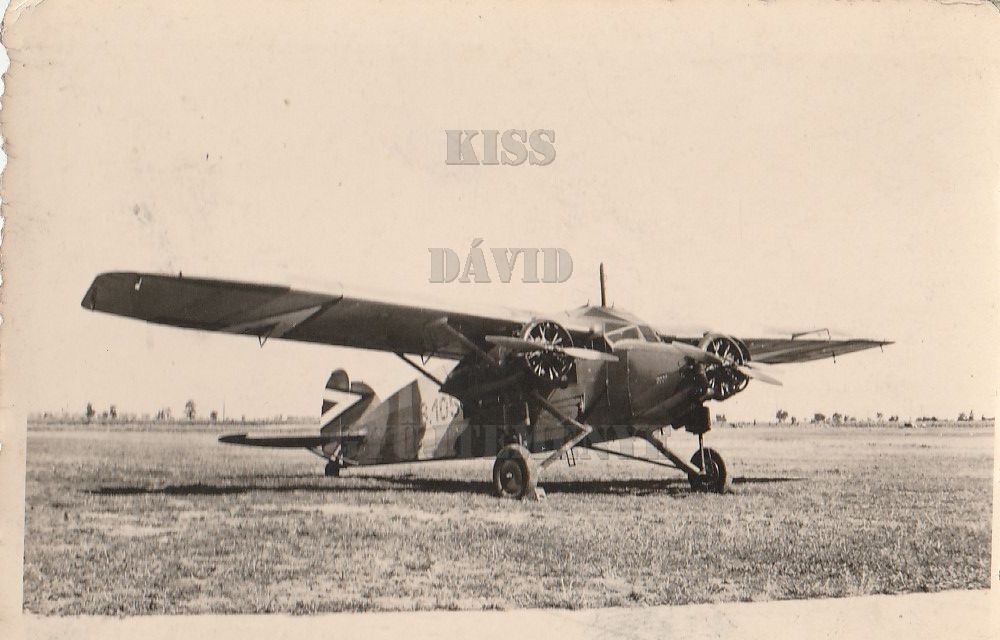 Caproni Ca. 101. bomber/transport airplane in Hungarian service
Caproni Ca. 101. bomber/transport airplane in Hungarian service
This type of airplane was able to carry around six fully loaded paratroopers, and has been deemed unfit for larger airborne operations, but ideal for training purposes, and transporting specially trained parachutist hunter units, mentioned above. The old airplanes were nicknamed by the paratroopers and the airmen of the Parachutist Transport Company as “Flying Coffins”.
The other, more modern type of airplanes, used by the Hungarian parachutists were the Savoia-Marchetti SM-75 transport airplanes, designed and built to be able to carry up to 24 paratroopers. With the addition of a machine gun turret on top of the airplane, it was able to defend itself against enemy airplanes too. The more spacious airplanes only had one major backfire: their size. The airfield of Pápa had no hangars big enough to accommodate these larger airplanes, so they were stored under the Sun, only covered by tarpaulins, or shelter halves, letting the canvas-covered planes to suck in the rain and snow, which has corroded the mechanical parts, and made flying them a dangerous business even for seasoned pilots as the ones serving in the Parachutist Transport Company.
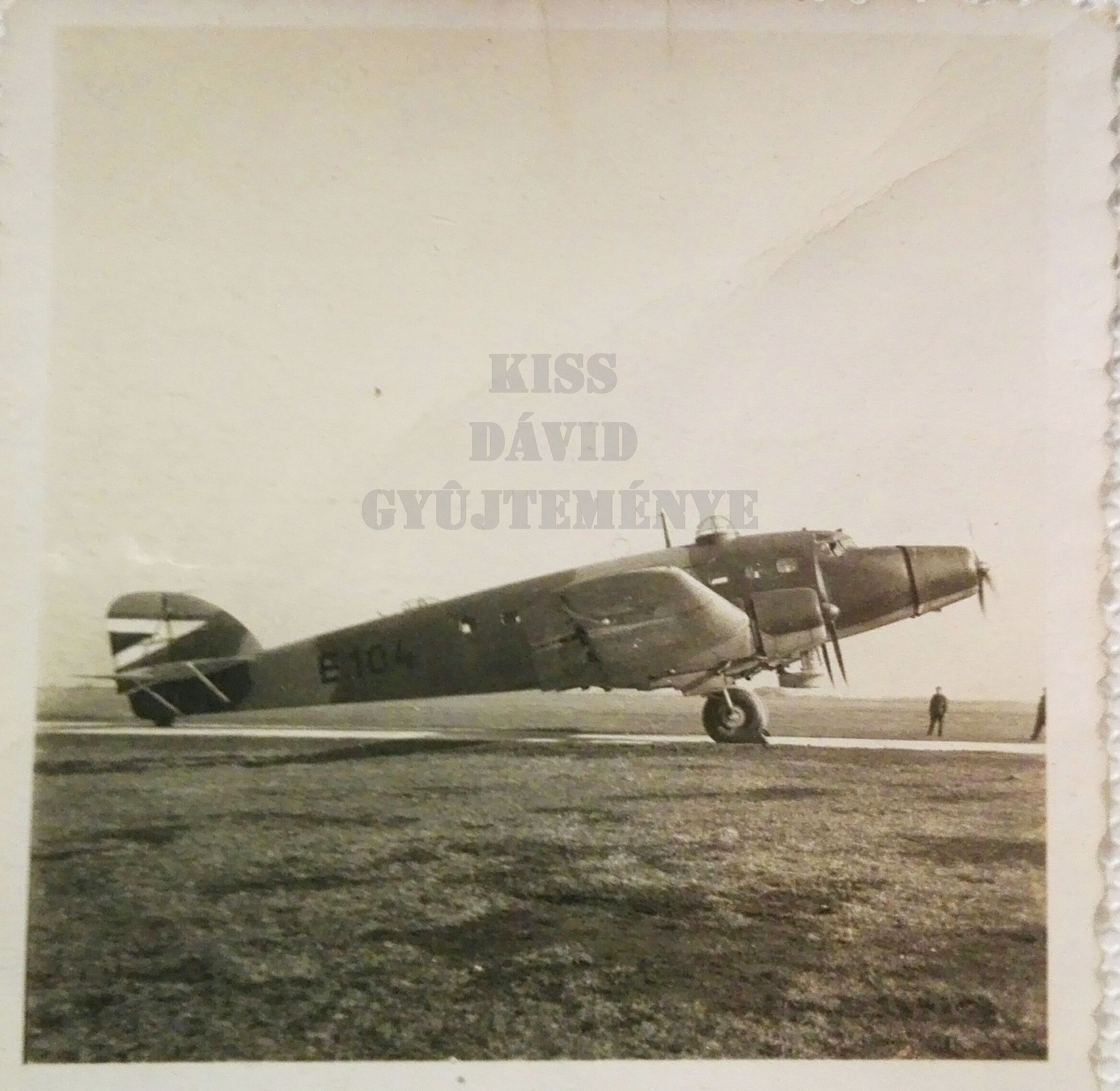 Savoia-Marchetti SM.75 paratrooper transport plane of the Parachutist Transport Company
Savoia-Marchetti SM.75 paratrooper transport plane of the Parachutist Transport Company
These details above are as important as it comes, in the light of the events of the first combat jump of the Hungarian paratroopers, but let us stop for just a bit to take a look at the political and military background of the upcoming operations.
The Kingdom of Yugoslavia, after years of pro-German politics has been torn apart by a putsch of nationalist, and anti-fascist forces in March 1941. Germany could not let its former ally to turn its back on her and planned an invasion to consolidate the region. The German government, similarly to the territorial changes of 1940 has asked for Hungarian forces to take part in the action, and in return the German government will support the Hungarian claims for parts of Yugoslavia, inhabited by a Hungarian minority. Though it has meant a direct attack on a neighboring country, the Hungarian government were mostly in favor of the plans, in lights of the German successes in other campaigns. As a protest the prime minister, Pál Teleki has committed suicide in his home, after addressing Regent Horthy in his last will, stating that Hungary will be remembered a “corpse robber” and the “most wicked nation”, as the Hungarian government has just signed a treaty of “everlasting friendship” with Yugoslavia in December of 1940.
The paratroopers at Pápa were unaware of these political machineries, and the dramatic events in the background, as they only wanted one thing: prove their skills in action. This statement is backed by the fact that in the original battle plans for the Hungarian forces there has been not a single mention of the use of airborne forces. They have been added later, by the request of Major Bertalan, who was in a hurry, to prove, that years of training his soldiers was not in vain. The deadline was close, as the first conscripted soldiers, volunteering for paratrooper service were closing the end of their three years of military service, and their knowledge would go down the drain without it actually being tested against an enemy force in real combat. The paratroopers had to jump as soon as possible.
The addition of a company-sized paratrooper force to the plans has aimed the capture of a bridge at Szenttamás (now Srbobran, Serbia), rigged for destruction, and to secure it for the advancing Hungarian forces. The assault force has been assembled mostly from the 1st Parachute Company, consisting of the “oldest” paratroopers of the battalion, with some other soldiers with special skills (e. g.: language) transferred to the ad-hoc unit. The force has been ordered to jump on the 12th of April, 1941.
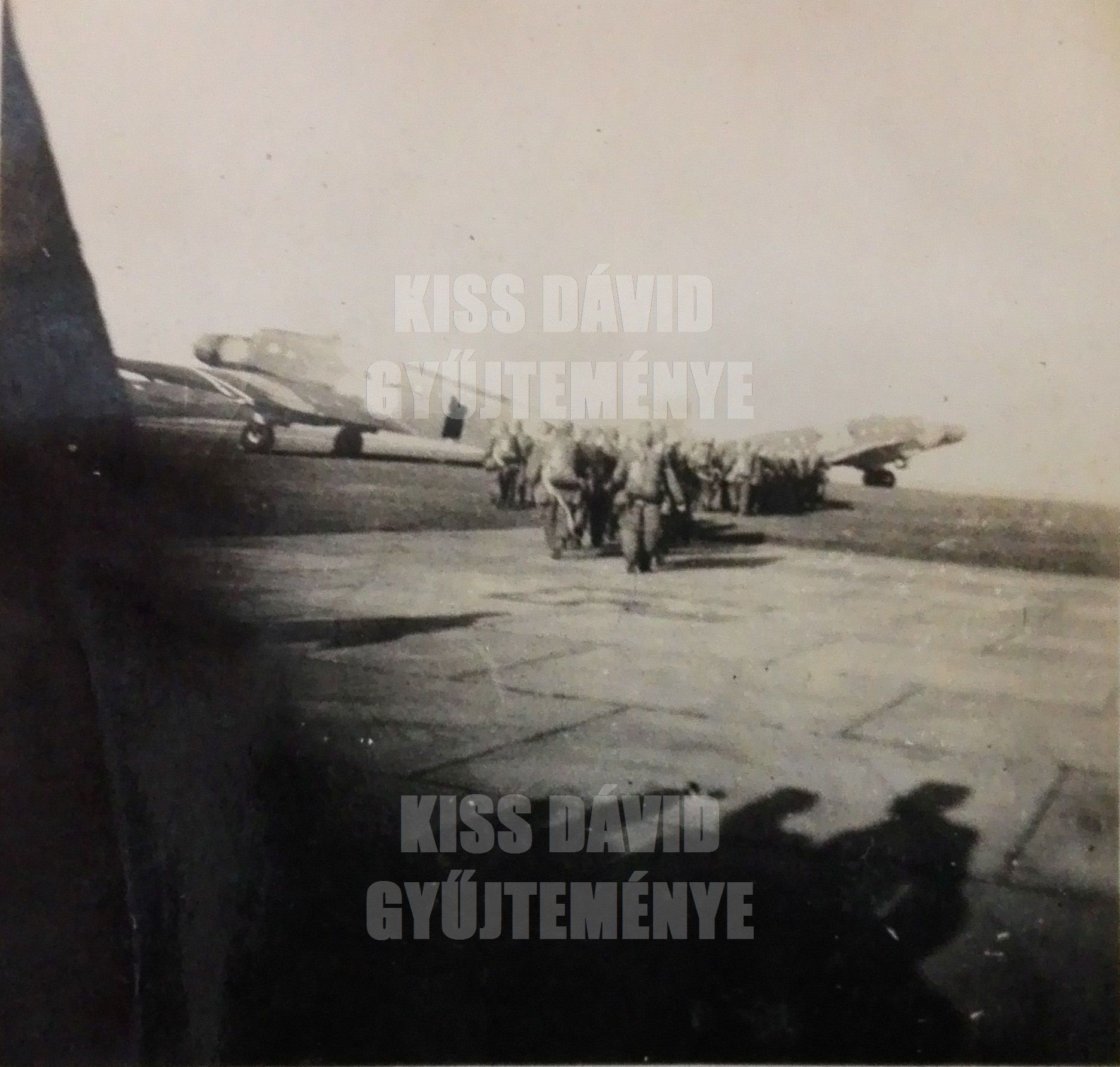 Paratroopers boarding their planes before taking off for a practice jump. Their combat load is clearly visible.
Paratroopers boarding their planes before taking off for a practice jump. Their combat load is clearly visible.
The assembled paratroopers have been equipped individually with a main and a reserve parachute, double bread bags, a backpack, a pistol, a fighting knife, four or more hand grenades, a block of TNT, plenty of ammunition, conserved food, first aid kits, a flashlight, and a rifle, or submachine gun in a canvas holster, tucked under their reserve parachute. They were overloaded and clumsy, wearing their jumpsuits, headwear, and protective gloves too.
The four SM-75 airplanes were overloaded too, as additional supplies in drop canisters were attached to them. Rainy weather made the runways of the Pápa airfield a muddy trap for them, so the planes have relocated to the nearest suitable airfield at Veszprém, with concrete runways. The paratroopers have followed them on trucks.
Boarding the airplanes, the paratroopers were waiting to take off. Against the will of his commanders, Major Bertalan has also boarded the lead airplane of the small air unit, stating that he is the only one in the unit with actual combat experience, and he is not willing to let his men jump into action without him. He was wearing his Kings Cross of the Military Order of Maria Theresia, the highest WWI. decoration of the Austro-Hungarian Monarchy.
The lead airplane, number E-102 has started its engines on the 12th of April, 1941. around 16:45, and climbed up to around 100 meters, where it turned on iots right side, and in a steep angle crashed to the ground. By the recollections of the survivors we can state that Major Bertalan has been hit by the ammunition crates of the machine gunner of the airplane, and fell to the ground in the moment of the crash landing. The other paratroopers have been sitting on two canvas benches facing each other, and fell on top of each other. In the next moment, the pouring kerosene from the crashed plane has been soaked everything, then the engine, pushed inside the plane by the crash set it aflame.
 The crashed SM.75 after it has burned out
The crashed SM.75 after it has burned out
Most of the paratroopers inside the plane instantly started screaming in terror, and fighting each other to get out of the infernal wreck. The ones closest to the doors jumped out, while others have used their trench knives to cut a hole in the canvas cover of the plane. The pilot and the co-pilot have died at the moment of the crash. Out of the 29 airmen and paratroopers on board, around only 8 were lucky enough to escape the flames, while their comrades tried to reach the burning crash-site in vain, as the ammunition and grenades stored in the plane, and in the equipment of the agonizing paratroopers have started to explode.
Despite all of these condition one of the injured paratroopers, who has got out alive, Corporal Imre Kerekes has sprinted back to the wreck, to help if he can. His last words were these:
“The Major is still inside! Lets save him!”
The 22 years old corporal has never emerged from the wreck.
The guards of the airfield had to cordon the crash-site, as the paratroopers have again and again tried to break into the flaming airplane to help their beloved commander and comrades, screaming in the flames, but there was nothing to do. The jump has been canceled, while the injured, and the dead could be assessed. Lt. Zoltán Kiss, the only officer present, who has not been injured has protested and demanded the action to be continued. Finally a permission has been given, and a 80 men strong detachment was on its way to get the job done. Lt. Kiss has left behind those who were in the least favorable mental state to continue the mission, and some of the equipment too.
Due to the delay, caused by the flight accident, the paratroopers have arrived in dusk, and without maps of the dropzone, as those have been destroyed when the lead airplane has crashed. In these conditions it is not a surprise, that the unit has miss-dropped, and found itself kilometers away its objective. The paratroopers had orders to deploy both of their parachutes, to make it look like that there is a much larger force in action.
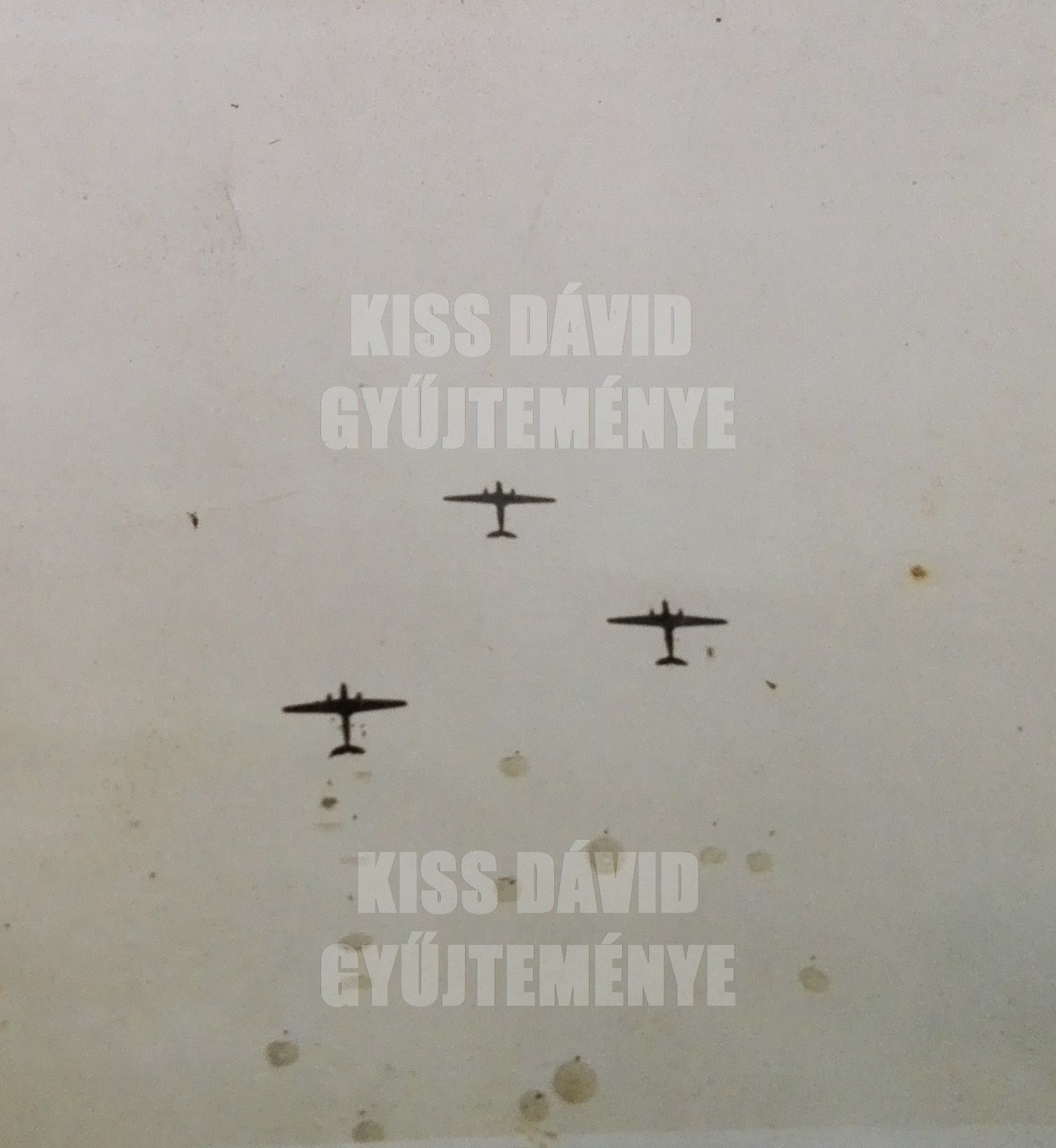 Hungarian paratroopers during a mass jump exercise
Hungarian paratroopers during a mass jump exercise
The paratroopers have first come under fire from nearby farmhouses. The charge of the Hungarian paratroopers has surprised the defenders of the farmhouses, who have been killed, or taken captive. Six prisoners were accounted for, and the Hungarian paratroopers have met the enemy for the first time. They were a mix of regular Yugoslav soldiers, and Serbian “cetniks”, or irregulars, mostly civilians, using hit-and-run tactics against the Hungarian forces. Fighting them in a guerrilla-style warfare proven to be difficult and dangerous not only daytime, but especially at night.
As one of the Hungarian paratroopers, an acting interpreter and ethnic Croat-Hungarian, fluent in both Serbian and Croatian, told his family later, during these days a group of paratroopers have occupied a family home for a night shelter, and they have noticed that there are no men present. The girls and women at home started to talk about that all of the men are in the barn, waiting for the Hungarian soldiers to get to sleep, then slit their throats. The interpreter told his comrades it is better to leave immediately, but from the doorstep hinted the women inside in Serbian, that they can tell the men in the barn, that the Hungarian paratroopers are eager to meet them anytime.
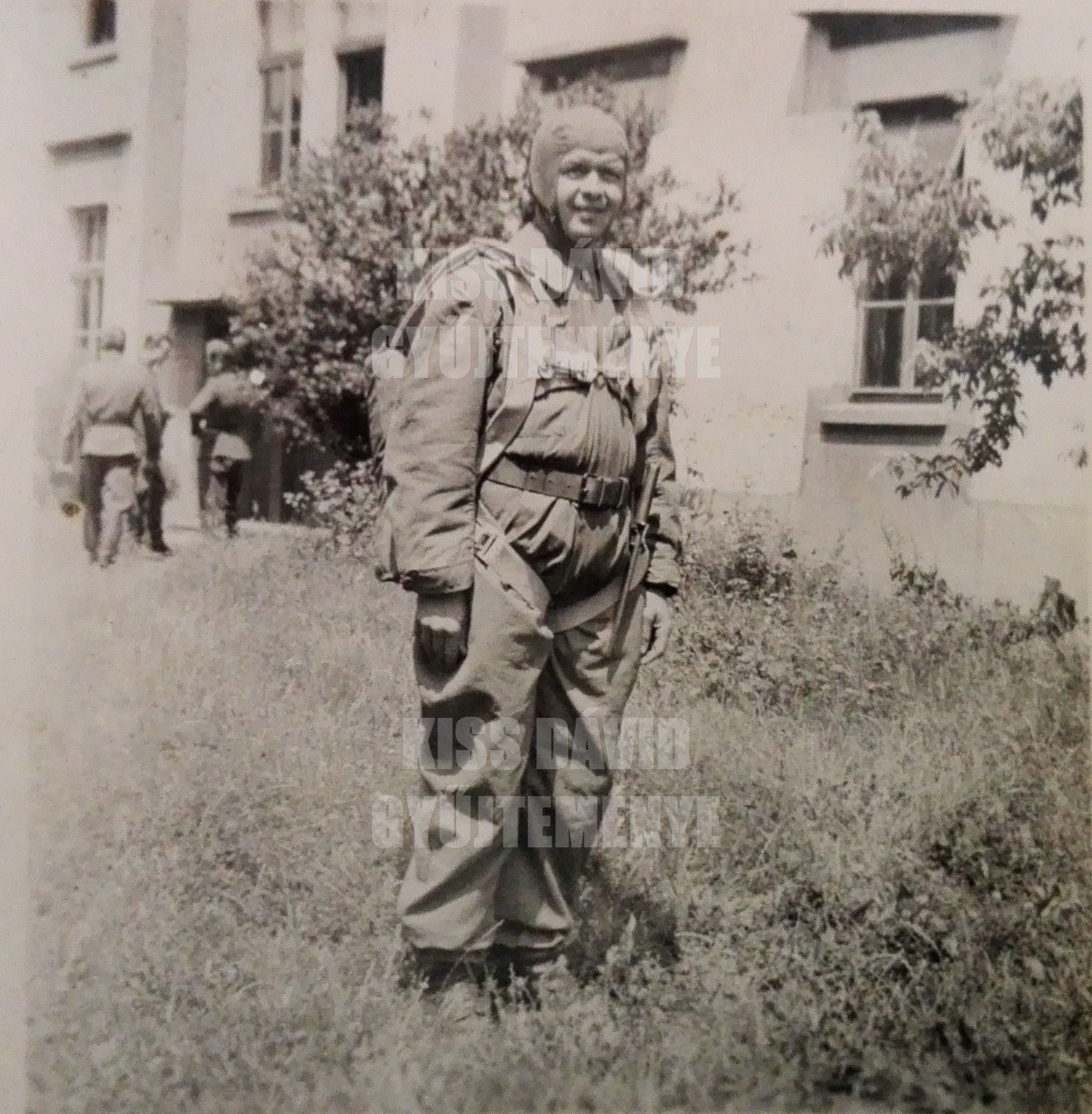 Paratrooper Private József Jelics, acting interpreter during the combat jump.
Paratrooper Private József Jelics, acting interpreter during the combat jump.
The paratroopers were soon discovered by the advancing Hungarian forces, and were mounted on trucks as mechanized infantry, reaching their mission on trucks. The bridge at Szenttamás was intact, but had a strong garrison of defenders, with a pillbox overlooking from the other side. The battle plan involved the paratroopers attacking on the flanks of the road, while the mechanized column drove up to the bridge. The paratroopers led by Lt. Kiss have crossed the river, and secured the beachhead, after destroying the pillbox. Thus the bridge of Szenttamás has been in Hungarian hands at once.
In the following days the Hungarian paratroopers have acted as mounted infantry, linked to the mechanized units, and reached Újvidék, after a series of skirmishes, where one of the members of the unit has distinguished himself above and beyond call of duty.
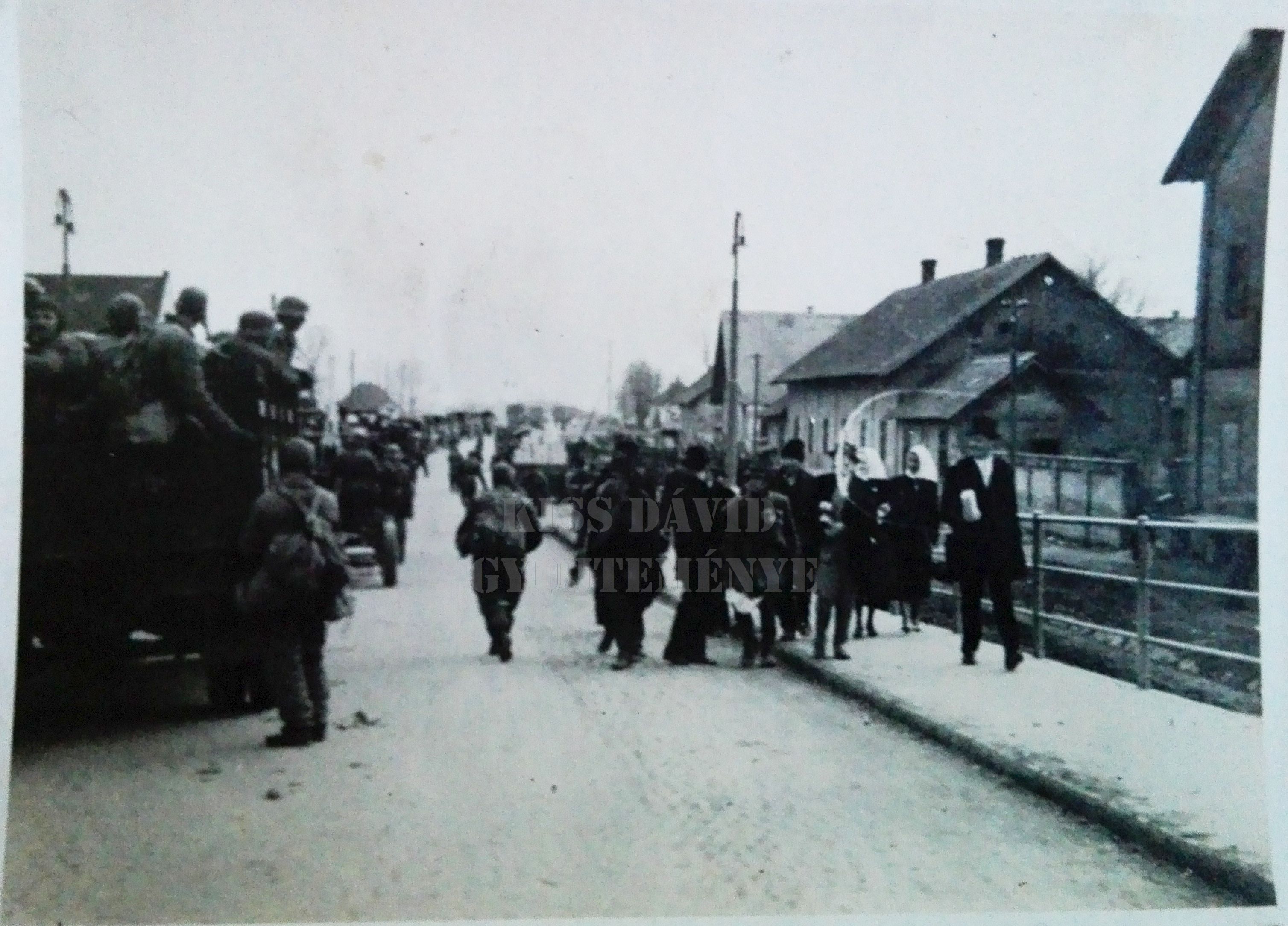 Hungarian paratroopers and mechanized units moving forward during the campaign. The paratroopers are easily recognizable by their "haube" caps and their backpacks.
Hungarian paratroopers and mechanized units moving forward during the campaign. The paratroopers are easily recognizable by their "haube" caps and their backpacks.
These skirmishes have seen one of the most daring deeds of the paratroopers in this campaign. A severely wounded paratrooper had to be immediately operated, so the field surgeon of the unit, Lt. Dr. Ferenc Vándor has come up with a crazy idea. Grabbing a captured rifle he has jumped in a Hungarian vehicle, and accompanied by a handful of fellow paratroopers drove to the nearest hospital – in the heart of the city of Újvidék, full of enemy forces. The daredevil doctor has stormed the operating theatre and demanded immediate help for his comrade, while the other paratroopers have secured the floor. Then the airborne doctor has conducted a successful operation with the help of a shocked team of local medical staff.
The paratroopers, after four days of fighting have been withdrawn from the front on the 15th of April, 1941, to attend their comrades funeral. The commander and founder of the unit, Árpád Bertalan has been promoted posthumously to the rank of Lieutenant Colonel, and has been buried with full military honors at Budapest. His comrades were buried at the military cemetery of Veszprém in a mass grave, resting together. The following investigation has stated that the cause of the accident was a mechanical fault, due to the corrosion of vital parts, as the airplanes were standing under the open skies all winter long.
Life after the catastrophe in the year of 1941
The catastrophe at Veszprém has shocked both the paratroopers, airmen, and the civilian population of Pápa. The council of the city has decided to rename the road leading to the airfield in memory of the legendary officer, making it the “Vitéz Bertalan Árpád Road”. Meanwhile the Parachute Battalion has also taken steps to be named after its first commander. Their efforts were not in vain, and on the 9th of May the unit has officially became the Royal Hungarian 1st “Vitéz Bertalan Árpád” Honvéd Parachute Battalion.
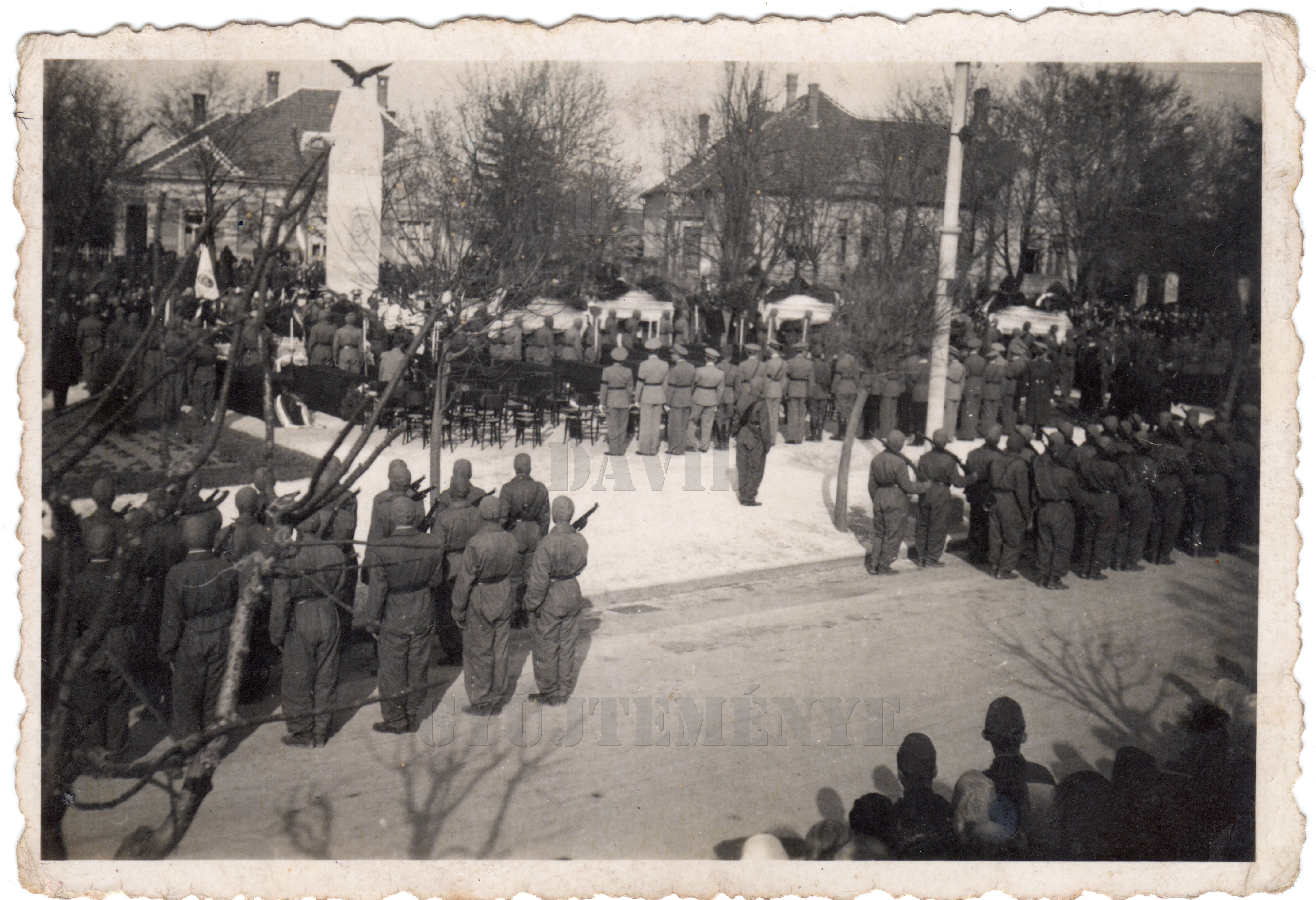 Paratrooper honor guards on the funeral of their fallen comrades at Veszprém, Hungary
Paratrooper honor guards on the funeral of their fallen comrades at Veszprém, Hungary
A former parachutist officer, with only a short parachutist training under his belt, and his brief service with the men behind his back, became the successor of the beloved Lt. Col. Bertalan. Captain Gyula Labancz has been a career officer since 1931 and a member of the “old school”, with only a short period of service as a parachutist officer, attending basic jump training, then being transferred to the Military Academy after several months of service with the paratroopers.
This officer has been known for his despise towards the now legendary “parachutist spirit”, which has been a mixture of leading by example, a more informal, and closer relationship between the enlisted ranks, and the career soldiers, flexible interpretation of the military drills, keeping in mind their spirit instead executing them by the letter.
While it is true that this “parachutist spirit” has not been without scandals, and “affairs”, like when the unit has won a barrel of beer from the pilots, for pulling a prank on the spectators of an airshow, as they have jumped with their wooden test-doll, called “Maris”, with a rigged, unusable parachute, making it hit the ground with full speed, them hiding it in the arriving ambulance. Of course the ensuing panic after the “bloody tragedy” had to be handled by the organizers of the airshow. In the meantime the paratroopers had a party at home, celebrating their prank, officers and enlisted together. The then-Major Bertalan was not pleased by the dark humor of his men, but had tolerated their shenanigans, as long as they were able to do their duties to the outmost
Captain Labancz on the other hand has been more of a “traditionalist”. As one of his officers has recalled:
“He has disapproved our fidelity towards Bertalan, envied even his memories. He has made derogatory remarks towards his predecessor, making officers and enlisted ranks both upset, as we have loved Bertalan, as we would love our own father. He has wanted to end the liberal ways of Bertalan, by the introduction of counter-measures, which were mostly improper, and dangerous.”
The era of this narrow-minded officer has been ended by his own men, when all of the surviving officers of the PEU has resigned from further airborne service, and left the unit. This, two deadly parachute accidents, and a case of unlawful use of military vehicle have ended the reign of Captain Labancz in August 1941. The only mementos of the Labancz-era were the drainage channels of the airfield, dig by the veteran paratroopers in the summer heat, on orders of the Captain, and named in “loving” memory after him.
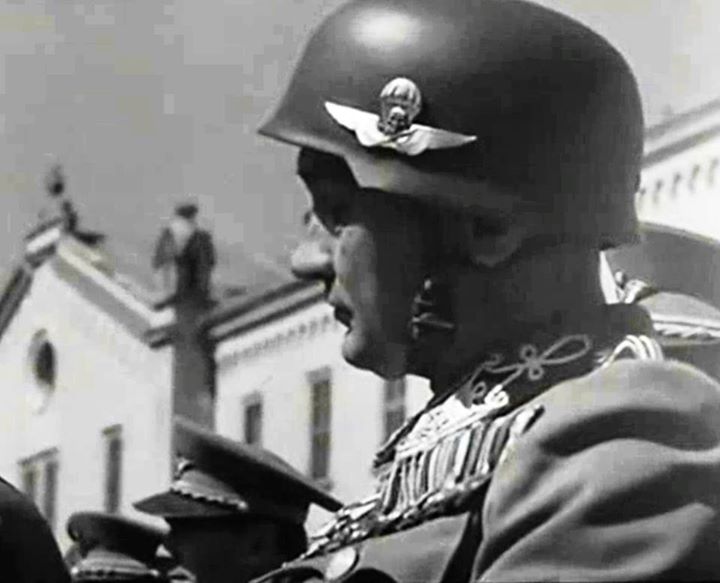 Colonel Vitéz Zoltán Szügyi during an oficial parade of flight officers, wearing a "homemade" parachutist helmet, designed for parade use, and modeled after the German M38 parachutist jump helmet.
Colonel Vitéz Zoltán Szügyi during an oficial parade of flight officers, wearing a "homemade" parachutist helmet, designed for parade use, and modeled after the German M38 parachutist jump helmet.
The successor of this unpopular officer has tried a different approach. Colonel Vitéz Zoltán Szügyi has started negotiation with the officers of the unit, asked them about the necessary changes, and the security measures in airborne training. Regarding to an anecdote, during a briefing he has started to explain the details of his future plans for the Parachute Battalion, when a Lieutenant has interrupted him, stating that the Colonel has not got any authority to decide in any matters regarding the airborne tactics, as he himself has never jumped out of an airplane. The Colonel has calmly responded:
“You are right Lieutenant”
Then the briefing has been adjourned, as Colonel Szügyi had to leave. He has headed for the airfield, where he has started his airborne training immediately. On the next briefing he has been wearing the freshly earned parachutist badge.
While these changes have taken place at Pápa, the world politics were in motion too. On the 22nd of June 1941, the German Wehrmacht has invaded the Soviet Union, opening the Eastern Front. Hungary has joined the “anti-communist crusade” on the 27th of June, after being bombed and strafed by unidentified airplanes. The Hungarian units were advancing faster and faster and the Hungarian 1st Mountain Brigade has lost its contact with its supply units. Thus it became necessary to arrange aerial resupply, relying on the Parachute Battalion. The 10-men strong unit has jumped on the 6th of July, 1941. The dropzone has been situated south of Kolomea, in the Soviet Union. The airplane has brought in supplies in drop canisters, packed with food, ammunition, and medical supplies. After several tries the paratroopers have jumped in a secondary drop zone, and have come under small arms fire instantly. Landing the paratroopers have discovered that it was friendly fire, as the ground units have thought they see enemy partisans landing. The messages about the parachute resupply in the area have never reached the ground forces. After a short dispute the paratroopers have located their canisters, handed over the supply to the ground forces, and with the help of locals put the empty canisters on carts. Some missing canisters were found in the quarters of the unit firing on the resupply drop, completely empty, and looted by the soldiers. After collecting all of the canisters the paratroopers have returned to Hungary. This happened to be the last Hungarian airborne operation of WWII.
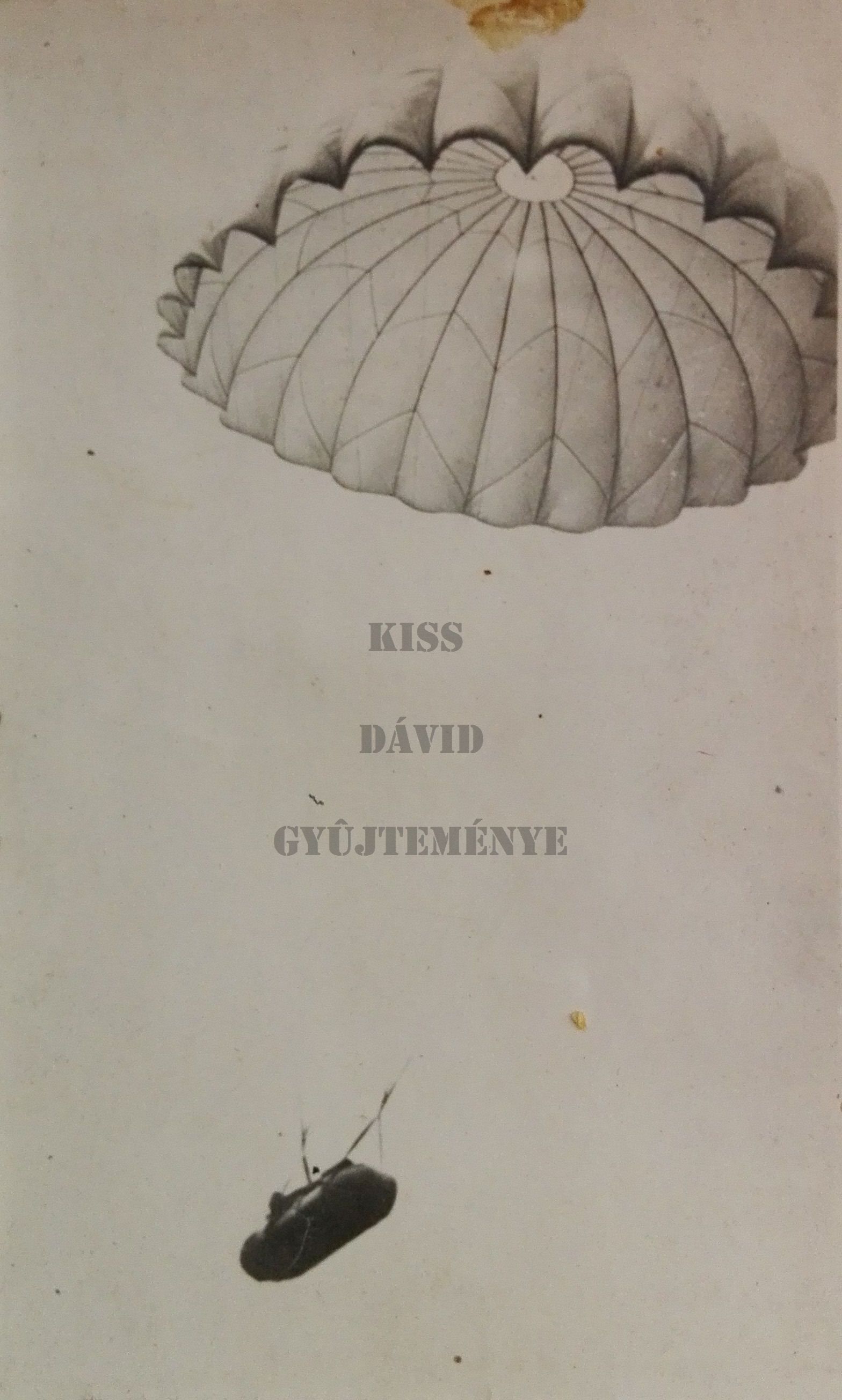 Hungarian drop canister slowly descending on a parachute.
Hungarian drop canister slowly descending on a parachute.
The island of peace in the ocean of war – From 1942 to 1943.
The Kingdom of Hungary became more and more involved in the battles of the Eastern Front, sending in more and more troops, totaling in more than 200 000 Hungarian soldiers serving in the Royal Hungarian 2nd Army up to the end of 1942.
Meanwhile at Pápa, the Parachute Battalion has been evolving slowly, as an elite unit without a mission. Winter ski camps have followed different specialized training schools for signalmen, heavy weapons, medical staff of the Battalion, and there was even time for a Flag Dedicating Ceremony for the unit, visited by the son of Regent Miklós Horthy, István Horthy, who has served as a fighter pilot himself.
This peaceful intermezzo in the wartime Hungary has marked the era of experimenting with various parachuting techniques, and development of a new airborne medical doctrine, assigning a new position into the combat medicine, the so-called “first aid men”. These individuals have underwent additional first aid training parallel to their airborne infantry training, thus able to provide additional help to the wounded while behind enemy lines for a prolonged period, and also fight as airborne infantry.
Widening the existing horizon meant to ask for sacrifices. The year of 1942 has marked its peak in deadly parachute accidents, claiming the lives of six young paratroopers, who were treated similarly to their fallen comrades, killed in action. A new tradition has started, as on All Souls’ Day every single grave covering a paratrooper has been guarded by armed ceremonial guards, dressed in jump suits, standing in attention all day long, reminding the visitors of the graveyards to the sacrifices of these soldiers.
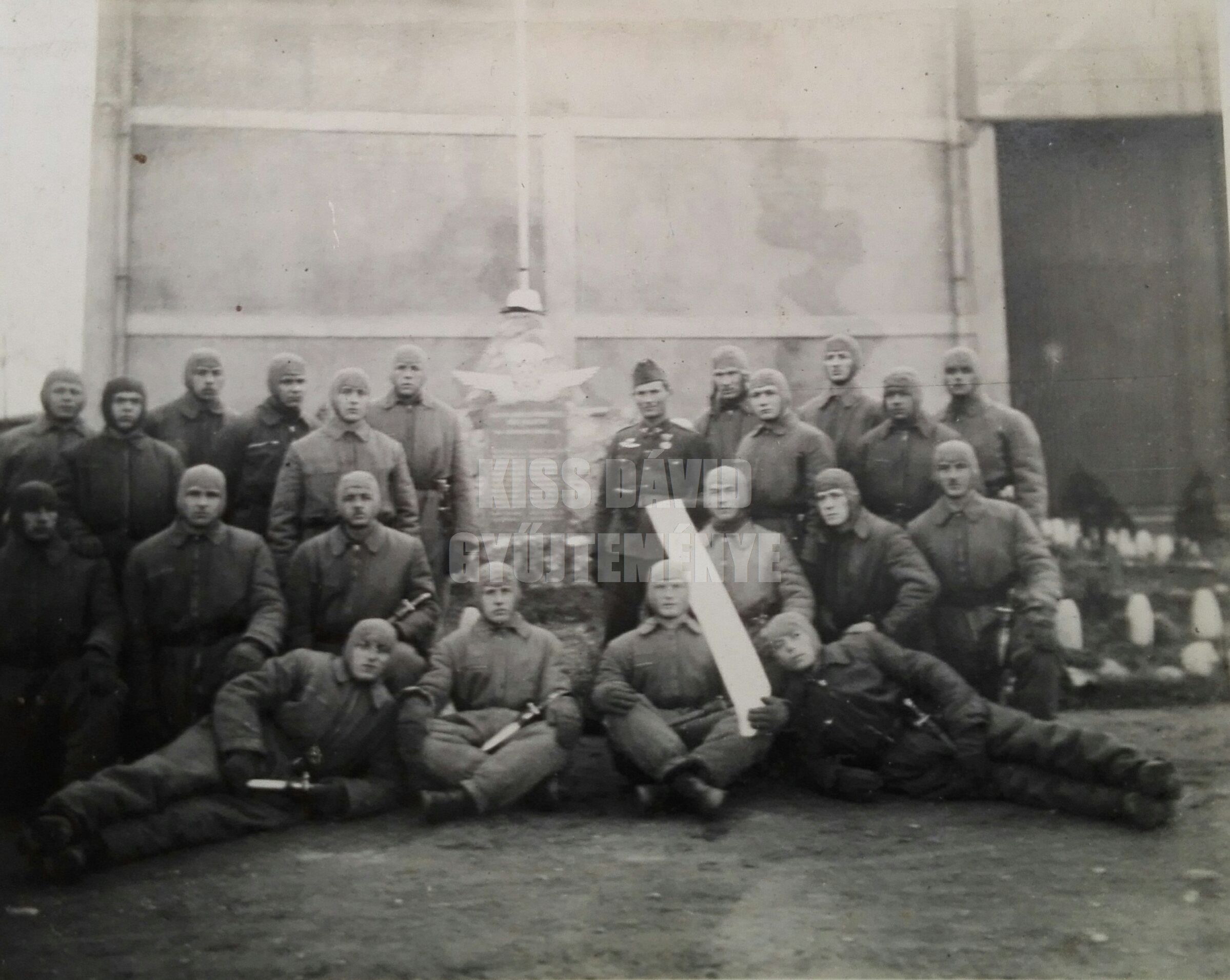 Paratroopers next to the memorial of the fallen comrades at the Pápa airport in 1943.
Paratroopers next to the memorial of the fallen comrades at the Pápa airport in 1943.
The relatively peaceful period of the Parachute Battalion could be traced back to one reason only. Although the Germans have asked for the participation of these soldiers in the Eastern campaign on several occasions, the Hungarian official turned down the request every single time, claiming that the unit is “under training”, “developing” and so on. The real reason of keeping this unit back at home was their loyalty to Regent Horthy, and their battle-hardened, and highly trained status both as an assault troops, and paratroopers. The Hungarian leadership wanted to keep intact this unit as long as possible, as its “golden reserve” for the future.
Thus only a handful of paratroopers have seen the reality of modern war on the Eastern Front, after arranging three month long “tours” to the frontlines, assigned to various units, in various places, acting as PT instructors, platoon leaders, close combat instructors, in harmony with the rank of the paratrooper, and his abilities. The goal of these “tours” was to acquire frontline experiences that could have been adopted into the training of the unit. Only career officers, and NCOs were eligible to apply for permission to participate in these tours.
Hungarian soldiers serving on the Eastern front have loved their paratrooper comrades. As one of them has recalled:
“The paratroopers leading our training are outstanding people! They have got great pedagogical sense! 1st Lieutenant Fehér is a cheerful, comradely, educated fellow. He is also a real team-player! He is doing everything together with us. He is not leaving us behind. He is not avoiding any of the difficult exercises. He not only orders us, but also helps us to fulfill his orders!
István Ember is a well-trained paratrooper, who is an educated career soldier, with excellent abilities. He loves sports, joy, love, loves to sing, and to compete. He also likes sanity, outspokenness, and sincerity around himself. Adding up to this is his comradely ways, helpfulness, and his ability to lead by example. Sergeant István Ember is not only explains, but also demonstrates the exercises, and one should be a man amongst men to do it better than him!”
Colonel Szügyi has also deployed with his troops to the front, assuming the command of the Royal Hungarian 43rd Infantry Regiment, guarding an important valley on the front. His superior, Major General János Legeza writes about their first meeting in his private journal:
“Visit to the 43rd Infantry. Colonel Vitéz Szügyi is full of confidence, power, and activity. While this men is in the Marki valley, I could remain calm.”
These feelings soon would be tested, as on the 12th of January 1943 an overwhelming Soviet offensive has started to pour on the Hungarian defense lines, breaking the will and lines of the poorly equipped, and frozen soldiers of the front. In these battles, after the complete collapse of the Hungarian 2nd Army the will, proficiency, and humanity of the Hungarian paratroopers have saved hundreds of fellow soldiers, marching to the West, escaping the Soviet offensive. Several Hungarian paratroopers, including Colonel Szügyi has decorated themselves in these hopeless battles, keeping together small units of soldiers, and helping each other. The unit of Szügyi has collected fleeing soldiers, arranged them into their column, and retreated in a disciplined manner, mostly thanks to the sheer willpower of their commander.
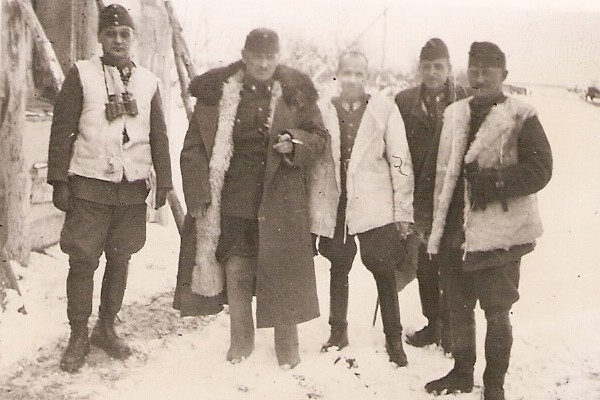 Hungarian officers on the Eastern Front during the winter of 1942-'43. On the left with binoculars is Colonel Zoltán Szügyi.
Hungarian officers on the Eastern Front during the winter of 1942-'43. On the left with binoculars is Colonel Zoltán Szügyi.
The paratroopers returning from the Eastern Front could see for themselves the realities of war, the face, and power of the enemy forces, but this has not destroyed their will to fight. Instead they have started to arrange for mock tank displays, to train their comrades for anti-tank tactics, learned on the Eastern Front, and advanced infantry courses, to give a better fighting chance against the Soviet Army in the future. They could not know that they had around a year to prepare.
Replacements – The Levente-parachutist program
Finding suitable volunteers for this unit has been a long running problem, because, as it has been mentioned above, opinions on the life expectancy of the paratroopers were varying from “short” to “really short”, and this new unit has been considered to be some form of a suicide squad, filled with daredevils. Of course German, and Hungarian successes have changed the mind of military leadership in general, but it was difficult to find unit commanders, eager to agree to transfer their best, and most motivated soldiers to join the Parachute Regiment. It was common to see these commanders sending instead “problematic” soldiers for paratrooper training, filling the ranks of the Battalion with brawlers, rebels, and the like, while barring the motivated, and trained soldiers from volunteering.
This problem had to be solved, so in the end of 1941 a new approach has been approved: Parachutist training outside of the military, for the youth. The Levente-Movement seemed to be an ideal way for such a program to start.
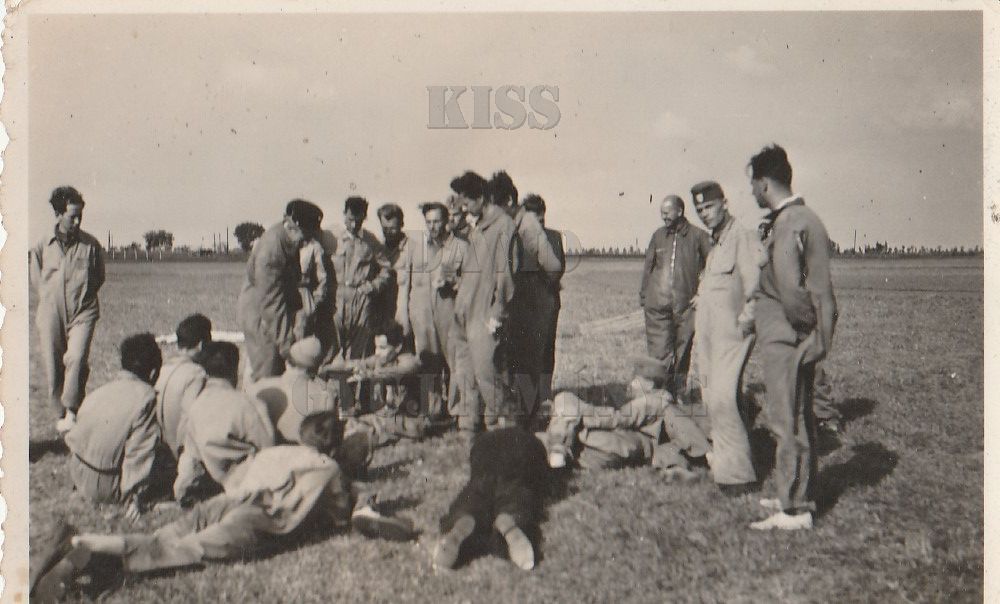
The Levente Movement
From 1920 on, it has became inevitable, to train youth from an early age in a nationalistic manner, and prepare them for an upcoming war with the neighboring countries if needed, in the name of revisionism. Thus a new movement was born in 1921. Named after the medieval Hungarian young warriors, known for their heroic deeds, and found in the company of kings and princes both on the battlefield, and on feasts.
The Levente Movement has been subordinated to the Ministry of Defense, and was responsible for the compulsory pre-military training of boys and girls between the ages of 12 and 21 in the form of physical training, drill training, patriotic education, and organizing events around these topics, like honor guard duties on national holidays, summer camps, sport competitions, and so on. It was similar to the German Hitler-Jugend, the Soviet Komsomol, or the international Scout Movement, which has been marginalized in Hungary by the Levente Movement.
The Levente Movement has also consisted of different branches, for different military specializations, like the water-levente unit, air-levente wing. or a radio-electronic branch, and the newest levente-parachutist units.
Levente-units were organized nation-wide, led by instructors, who were mostly former soldiers, or reserve officers. As the war progressed, the levente-units taken part in relief actions, collecting warm clothes, and gifts for the soldiers on the front, cleaning the rubble after bomb raids, escorting downed enemy airmen to POW camps, and even has been conscripted into the army from 1944 to serve on the front lines. At the end of the war most of the levente-units were marched to the West, and surrendered to the American and British forces. After the war the Levente Movement has been disbanded and banned, soon to be replaced by a Soviet-style “pioneer” movement.
Levente paratroopers have been organized into companies and platoons, and were filled with volunteer youth, medically fit for parachutist training. The levente-paratroopers had to pass a series of demanding tests. As one of them, Gusztáv Ábel Béla has remembered:
“It not went like that someone just decided to become a paratrooper, and then it has been done. Many different things have contributed to ones reception into the unit. The first obstacle was the medical examination. It has been conducted in the military hospital on the Hungária road, where military doctors have examined us. If one has failed the tests, a dream has ended. There was no appeal! You didn’t have to explain yourself, only acknowledge the sad truth. If someone has passed, it did not mean that everything is fine, as if you could not take the rigorous and very hard training, and it is revealed, that you are not able to do your duties, it is an other question.”
Part of this rigorous and hard training was mostly gymnastics, ground training, packing of the parachutes, parachutist training camps, and even live fire practices, with small-bore .22 caliber training rifles. The levente-paratroopers were a new spectacle, and a unique organization, frequently appearing in the newsreels, on the front covers of magazines, and in public events. The uniform of these young volunteers have consisted of a one-piece jumpsuit, similar to the 1939M jump suit, but with two breast pockets instead of one, and with their own jump badges, designed after the 1940M jump badge, and earned after a jump from the jump tower designed for the levente-paratroopers in 1943.
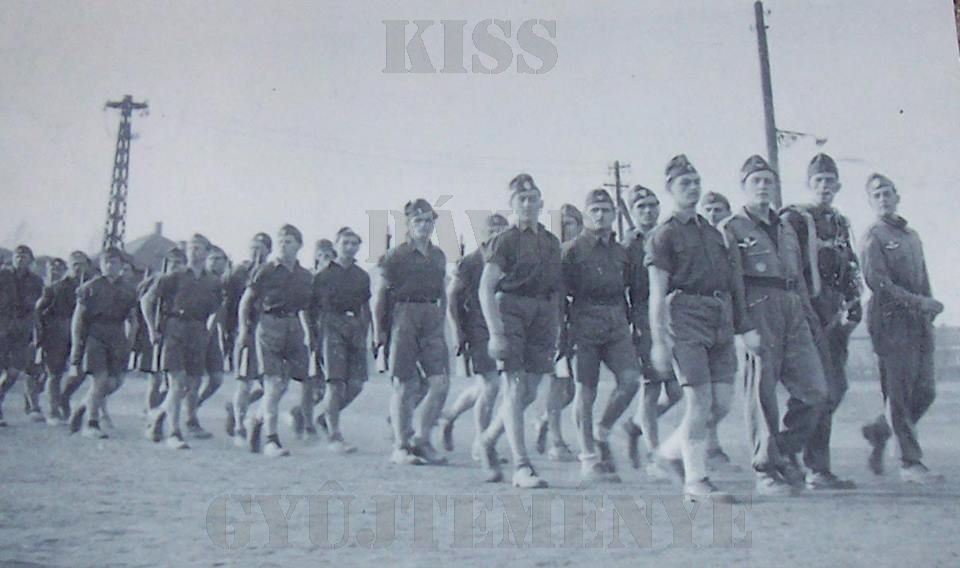 Levente-paratroopers on the march
Levente-paratroopers on the march
The levente-paratroopers became as close as possible during these trainings. As Gusztáv Ábel Béla, founding member of the levente-parachutist company of Újpest recalls:
“We have got a large building to store our gear in it. With a bit of social work we have modified it to be suitable as a clubhouse too. We have spent all of our free time there, we were together even at night. The common goal, the lots of work contributed, the boyish pranks we have pulled on have created a strong friendship, not given to anyone. these friendships have lasted for a lifetime.”
Of course wartime is not only about joy, pranks, and friendship. As the whole of Hungary, these future paratroopers have seen the lists of dead, wounded, and missing in action reaching the home front day by day. These 17-18 years old boys have also volunteered to take part in this global war. As one of them recalls his feelings in these dark days:
“Back then youth has died with a fearsome speed. Bloodshed was all around, on the different battlefields of the world. Men with different color, race, and background were slaughtering each other without mercy, sometimes not even knowing the reasons. Daily reports have listed numbers, which were not only statistical facts. Those numbers meant fathers, sons, and husbands too. (…) In those days – though we have never talked about these things – all of us knew that a time is closing, when any of us could become just another number on a nameless list like these. Yet all of us pretended that everything is all right.”

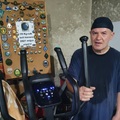
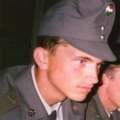
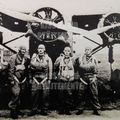
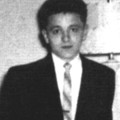
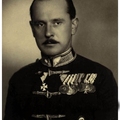
A bejegyzés trackback címe:
Kommentek:
A hozzászólások a vonatkozó jogszabályok értelmében felhasználói tartalomnak minősülnek, értük a szolgáltatás technikai üzemeltetője semmilyen felelősséget nem vállal, azokat nem ellenőrzi. Kifogás esetén forduljon a blog szerkesztőjéhez. Részletek a Felhasználási feltételekben és az adatvédelmi tájékoztatóban.